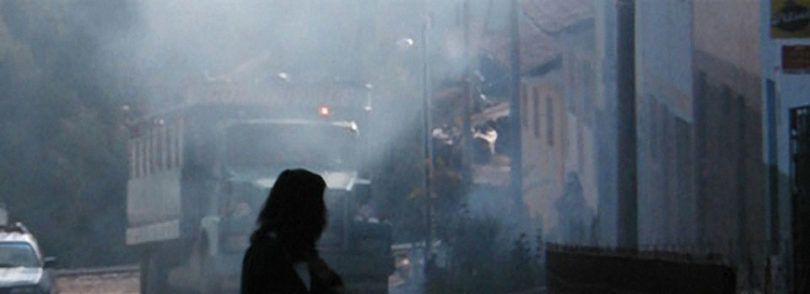“Let’s go to Cusco so we can breathe fresh air,” Peruvians say when they need to escape the traffic and busy life of the main cities. Although many Peruvians consider the sacred city of Cusco one of the cleanest in Peru, the mayor wanted to find out if that was true. He invited Luke Naeher, an environmental health scientist from the College of Public Health at the University of Georgia, and a team of UGA students to investigate exactly how fresh the city’s air is.
“On first impression, Cusco is a remarkably beautiful city,” said John Pearce, a graduate student who was part of the research team. Pearce presented his findings at the International Society of Exposure Analysis 2006 Conference in Paris and won first place in the student poster competition.
Like many developing countries, Peru lacks the necessary equipment to conduct adequate research about air pollution. In summer 2005, Naeher and four UGA students visited Cusco for this four-week study of residential, community and street-level air pollution in Cusco. Naeher and Manuel Aguilar Villalobos from Environmental Air Association, Lima-Peru, directed the project in conjunction with Cusco’s city hall and Cusco’s department of health and transportation.
In one study, students monitored air pollution in areas of the city congested with traffic and pedestrians during the morning and evening rush hours. In a second study, the research team discovered high levels of pollution in homes where many women cook over open fires fueled by wood and occasionally even plastics composed of toxic chemicals. Since houses in Cusco are closed places, residents’ exposure to hazardous chemicals is increased.
But residents are not the only people affected by pollution in the city. Each year 800,000 tourists climb Peru’s tall mountains, where the air is thin, to visit the ancient Incan ruins of Machu Pichu. If the air is not clean, they become more likely to develop respiratory problems.
The research done by the UGA team will help Cusco’s government develop health policies and regulations that will benefit the city’s population and its economy, which depends mainly on tourism. If the right measures are taken to control pollution, the sacred city of Cusco will continue to be a breath of fresh air for Peruvians and tourists alike.
Naeher, Aguilar, Dean Phil Williams (College of Public Health) and others from the U.S. Centers for Disease Control and Prevention traveled to Cusco in October 2006 to share the findings of this study with city officials and local colleagues and to finalize agreements in Lima and Trujillo that support future collaborative efforts between UGA and universities in these cities.








